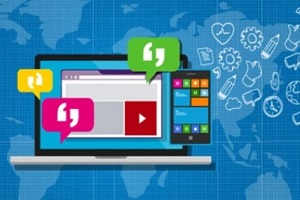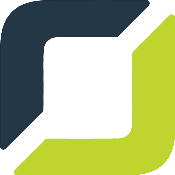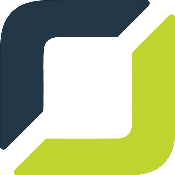The development of web portals is a critical element of modern networks, enabling businesses and organizations to create a centralized, engaging, and user-friendly platform for their target market.
Web portals have applications in various fields, such as healthcare, education, e-commerce, and more. An expertly designed web portal assists businesses in streamlining operations, augmenting user engagement, and delivering a superior user experience.
This article will delve into the essential components of web portal development, including the definition of a web portal and the development process. We will also explore factors such as understanding the target audience, designing an intuitive user interface, guaranteeing smooth navigation, and applying responsive design principles to create your own user-friendly and engaging web portal.
Web Portals: A Brief Overview
 A web portal, in many instances, is a specially designed website that functions as a single entry point for information, resources, and services on the internet. It serves as a centralized platform where users can access aggregated content from diverse sources, often customized to cater to their specific needs or interests. Although web portals may technically be considered as a type of “website”, portals differ from traditional websites.
A web portal, in many instances, is a specially designed website that functions as a single entry point for information, resources, and services on the internet. It serves as a centralized platform where users can access aggregated content from diverse sources, often customized to cater to their specific needs or interests. Although web portals may technically be considered as a type of “website”, portals differ from traditional websites.
Web portals generally boast a wide array of features, including search engines, email, news, online forums, and links to other websites or resources. They may cater to a broad audience or focus on a specific industry, interest, or demographic group.
Common characteristics of web portals include:
- Customization: Users can modify the portal’s layout, content, and features based on their preferences.
- Integration: Portals frequently merge information and resources from various sources, offering a unified user experience.
- Navigation: A well-structured layout and user-friendly interface enable users to easily locate and access the information they seek.
- Search Capabilities: Portals often include search engines or similar tools to help users quickly find pertinent content or resources.
- Communication & Collaboration: Many web portals promote communication and collaboration among users through features like email, forums, chat rooms, or social networking elements.
Well-known web portals include Yahoo!, MSN, and AOL. Some portals also cater to specific industries or sectors, such as corporate intranets or educational portals.
The Process Behind Engaging Web Portal Development
Web portal development involves designing, constructing and maintaining web portals. The process entails creating a comprehensive, user-friendly platform that incorporates various web-based resources, services and content, customized to meet the particular needs of the target audience. Portal development can be carried out by internal teams or outsourced to specialized web development agencies. It is an ongoing process that demands constant updates, enhancements, and maintenance to ensure the portal remains relevant, secure and responsive to user needs.
Web portal development is a multifaceted process encompassing web design, web programming, user experience (UX) design, content management, and system integration. Key aspects of web portal development include:
1. Planning & Analysis
Identifying the target audience, outlining objectives, and determining the necessary features, functionalities, and content for the portal.
2. Design
Crafting a visually appealing and user-friendly interface that aligns with the portal’s objectives and the target audience’s preferences. This step comprises wireframing, mockups and prototypes for the portal layout and design.
3. Development
Authoring the required code and programming the portal using various web technologies, such as HTML, CSS, JavaScript, PHP, Python, or other relevant languages and frameworks.
4. Integration
Connecting the portal to different data sources, APIs, and third-party applications to aggregate and display the desired content and services. This step may involve integrating databases, authentication systems, payment gateways, or other external systems.
5. Content Management
Developing a content management system (CMS) to facilitate easy creation, modification, and management of the portal’s content, such as articles, images, videos, or other multimedia assets.
6. Testing & Quality Assurance
Ensuring the portal functions as intended across different browsers and devices, identifying and fixing any bugs, and evaluating the overall performance, usability and security of the portal.
7. Deployment & Maintenance
Launching the portal on a hosting server, monitoring its performance, and performing regular updates and maintenance to keep the portal operating smoothly and securely.
8. Marketing & Promotion
Promoting the portal to attract and engage users, using techniques such as search engine optimization (SEO) and social media marketing.
Tailoring Portal Features Centered Around Target Audiences
Before initiating the development process, it’s essential to comprehend the needs and preferences of your web portal’s target audience. This understanding will enable you to tailor the web portal to fulfill their specific requirements, increasing the likelihood that users will find it valuable and engaging.
Conduct User Research
 Collect online behavior and preferences data through surveys, interviews, and focus groups representing your target audience’s demographics. Analyzing this data will provide valuable insights into their desired features and functionalities.
Collect online behavior and preferences data through surveys, interviews, and focus groups representing your target audience’s demographics. Analyzing this data will provide valuable insights into their desired features and functionalities.
Develop User Personas
Based on your research, create personas that represent different target audience segments. These personas can guide your development process, ensuring your web portal accommodates the unique needs of each segment.
Analyze Competitors
Examine your competitors’ web portals to pinpoint their strengths and weaknesses, and use this information to enhance the design and functionality of your portal.
Establish Clear Goals
Determine the primary objectives of your web portal, such as increasing user engagement, providing a central hub for information, or facilitating collaboration. Doing so lets you concentrate on the most important features and functions during development.
Designing An Intuitive User Interface
An intuitive user interface (UI) is essential for a successful and user-friendly web portal, directly impacting user engagement and satisfaction. To guide you, here are some best practices for designing a user-friendly and engaging web portal UI:
- Prioritize Usability: Ensure your web portal is easy to use, even for first-time visitors. Make elements such as buttons, forms, and menus simple, clean, and consistent across the platform.
- Follow Design Principles: Adhere to established design principles including contrast, hierarchy, alignment, and whitespace to create a visually appealing and easy-to-navigate platform.
- Opt For Clear & Concise Content: Use concise language to convey information effectively. Break up large blocks of text using headings and bullet points to help users digest the content more easily.
- Utilize Visual Aids: Incorporate visuals, including images, icons and infographics, to make your web portal more engaging and enhance the overall user experience.
- Accessibility: Ensure that users with disabilities can access your web portal by following accessibility guidelines and implementing keyboard navigation, alt-text for images, screen reader compatibility, and other beneficial features.
Designing A Seamless Navigation & Portal Structure
 Seamless navigation is vital for a user-friendly web portal, allowing users to quickly and effortlessly find the information they’re seeking.
Seamless navigation is vital for a user-friendly web portal, allowing users to quickly and effortlessly find the information they’re seeking.
Develop A Logical Site Structure
Organize your content into well-defined categories and subcategories that accurately represent the information contained within them. Doing so simplifies locating relevant content and navigating the site for users.
Implement Clear & Consistent Navigation
Use clear, consistent labels for navigation elements and ensure the main menu is easily accessible from every web portal page.
Incorporate Breadcrumbs
Implement a breadcrumb structure to show users their current location within the site and enable them to backtrack to previous pages easily.
Optimize For Search
Include a search function that allows users to quickly find content by entering keywords or phrases. Optimize your content for search engines by incorporating relevant keywords and metadata throughout.
Provide Intuitive Site Maps
Offer a visual or text-based site map to help users understand the overall structure of your web portal and easily locate the content they are looking for.
Implementing Responsive Design
With the widespread use of mobile devices, developing a web portal that functions responsively and seamlessly across different screen sizes and various platforms is crucial.
- Adopt A Mobile-First Approach: Begin the design process by focusing on the mobile experience, then scale up to larger screens. This approach ensures that your web portal looks and functions well on smaller devices at all times.
- Optimize For Touch: Ensure that core interactive elements, including buttons, links and forms, are easily clickable and accessible on touchscreens. Also, consider using larger buttons and more whitespace to accommodate touch interactions.
- Use Fluid Grids & Flexible Images: Implement fluid grid layouts and flexible images to allow your web portal to adjust automatically to different screen sizes and resolutions.
- Test On Multiple Devices: Conduct thorough testing on various devices and platforms, including smartphones, tablets and desktop computers, to ensure a consistent and optimal user experience across all platforms.
Integration Of Essential Features & Functionalities
In addition to the other tips outlined above, incorporating essential features and functionalities into your web portal will enhance its overall value and user satisfaction.
Personalization
Offer personalized content and recommendations based on user preferences and browsing history to make the platform more engaging and relevant.
Security
Implement robust security measures, such as encryption, secure authentication, and data protection, to ensure that user information remains safe and confidential.
Collaboration Tools
Include features such as chat, forums and file sharing to facilitate user communication and collaboration.
Analytics & Reporting
Integrate analytics tools to track user behavior, engagement, and other key performance indicators. You can use this data to inform future updates and improvements to your web portal.
Support For Different Languages
 Provide support for multiple languages to cater to a broad and diverse user base and expand the reach and accessibility of your web portal.
Provide support for multiple languages to cater to a broad and diverse user base and expand the reach and accessibility of your web portal.
Integration With Third-Party Tools
Enhance the functionality of your web portal by integrating it with third-party tools and services, such as established CRM systems, social media platforms, and payment gateways.
Reach Out To Orases To Begin Your Engaging Web Portal Project
Developing a user-friendly and engaging web portal requires a comprehensive understanding of the target audience, a well-designed user interface, seamless navigation, responsive design, and the integration of essential features and functionalities.
By focusing on these aspects and employing best practices, businesses and organizations can create a web portal that effectively serves the needs of their users and distinguishes itself in the competitive online environment.
If you want to create a web portal that delivers an exceptional user experience and drives meaningful engagement, Orases can help. Our team of experienced professionals specializes in web portal development and can assist you in creating a platform tailored to the unique needs of your target audience.
Contact us today to learn more about our web portal development services and discover how we can help you create a user-friendly and engaging web portal that stands out in the vast and expansive digital landscape.






